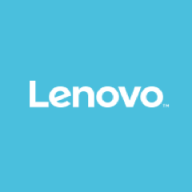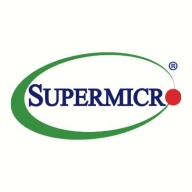

Supermicro SuperBlade and Lenovo Flex System compete in the high-performance server market. Lenovo Flex System tends to have the upper hand due to advanced features and long-term ROI advantages.
Features: Supermicro SuperBlade features dense compute nodes, efficient power usage, and a straightforward deployment process. Lenovo Flex System offers flexibility with integration capabilities, various processor options, and robust networking features.
Room for Improvement: Supermicro SuperBlade could enhance advanced feature offerings, increase integration capabilities, and provide more processor options. Lenovo Flex System may improve customer service responsiveness, reduce initial investment costs, and simplify feature customization.
Ease of Deployment and Customer Service: Supermicro SuperBlade provides easy deployment and reliable customer service with responsive support teams. Lenovo Flex System has a more intuitive deployment model, although its customer service is not as highly regarded as Supermicro's.
Pricing and ROI: Supermicro SuperBlade is appealing with a lower setup cost for immediate cost savings. Lenovo Flex System requires a higher initial investment but offers better long-term ROI due to its durability and comprehensive feature set, making it a favorable choice for those prioritizing future value over initial expenditure.


Flex System is Lenovo’s proven, 2nd generation blade, that efficiently runs your infrastructure applications with up to 80% better density than standard rack server deployments.
Supermicro SuperBlade delivers innovative computing performance and efficiency, perfect for data-intensive tasks. With its modular design, it optimizes space and power, providing a flexible and scalable infrastructure for demanding business workloads.
Supermicro SuperBlade is specifically engineered for modern data centers needing high-density computing. It offers a compact, modular architecture that simplifies system management and enhances agility. It integrates seamlessly with cloud and virtualization technologies, supporting diverse applications and workloads. Its design focuses on reducing operational costs while achieving peak performance. Users appreciate its balance of power efficiency and high computing capacity.
What are the key features of Supermicro SuperBlade?Supermicro SuperBlade is widely implemented in sectors such as finance, healthcare, and research where high computational power and storage are critical. In finance, it's used for real-time analytics and transactions. Healthcare facilities use it for patient data analysis and complex simulations, while research institutions leverage SuperBlade for simulations and data-intensive research tasks. Its adaptability allows enterprises to efficiently meet technical requirements unique to each industry.
We monitor all Blade Servers reviews to prevent fraudulent reviews and keep review quality high. We do not post reviews by company employees or direct competitors. We validate each review for authenticity via cross-reference with LinkedIn, and personal follow-up with the reviewer when necessary.